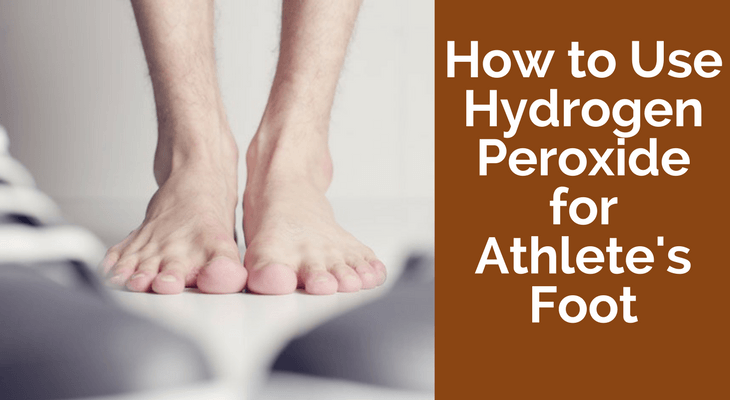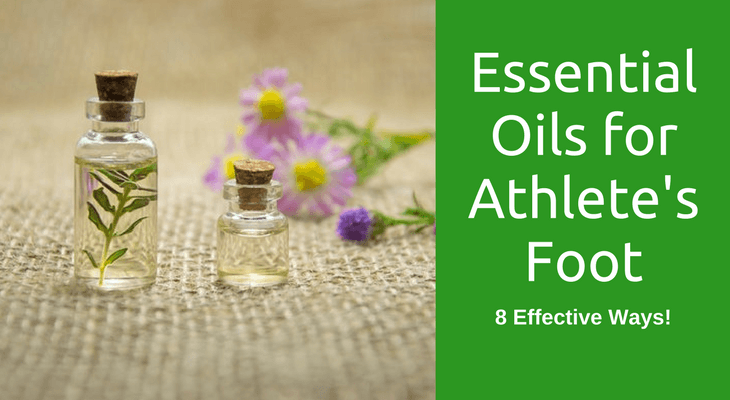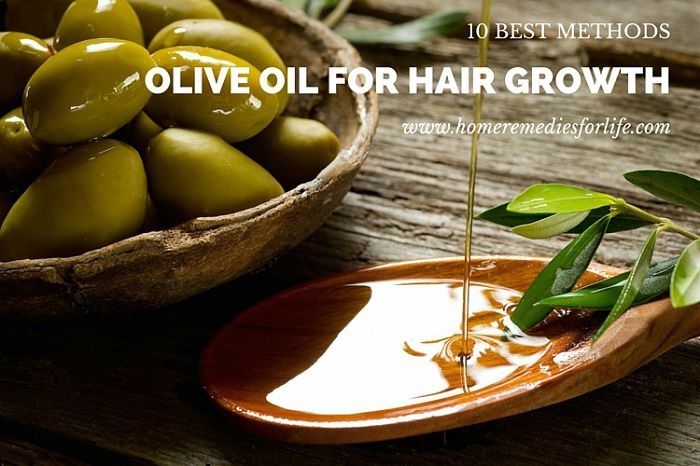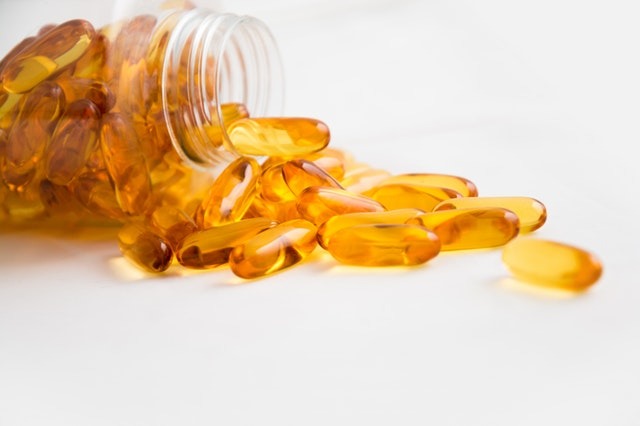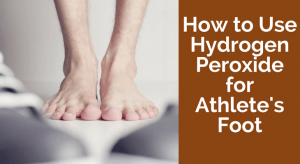 Athlete’s foot (tinea pedis) is a highly contagious infection caused by a fungus called Trichophyton mentagrophytes (T rubrum). Symptoms range from uncomfortable to painful and can include scaly or cracking skin, redness, itchiness, burning, blisters, and slight swelling. Unfortunately, the infection can spread to other parts of the body such as the groin area or the scalp as well.
Athlete’s foot (tinea pedis) is a highly contagious infection caused by a fungus called Trichophyton mentagrophytes (T rubrum). Symptoms range from uncomfortable to painful and can include scaly or cracking skin, redness, itchiness, burning, blisters, and slight swelling. Unfortunately, the infection can spread to other parts of the body such as the groin area or the scalp as well.
It’s estimated that 15%-25% of people have athlete’s foot at any given time (1). The T rubrum fungus loves moist areas and is commonly found in communal and public bathrooms, especially in showers, and around swimming pools. Walking around barefoot in one of these areas is how most people get infected. Sharing towels, socks, and shoes are another way.
Although medications can be effective, they are often full of chemicals and can be expensive. Treating athlete’s foot with hydrogen peroxide is effective and only costs a few dollars.
Does Hydrogen Peroxide Help Athletes Foot?
Hydrogen peroxide isn’t absorbed very well by the skin but it does effectively treat the surface of the feet. For this reason, it is recommended to alternate hydrogen peroxide daily with a second treatment, or even use it once a day and use a second treatment at a different time in the day.
Here’s how it works:
-
Hydrogen peroxide has antifungal properties.
-
Hydrogen peroxide aids the healing of damaged skin tissue (2)
-
When used for another 2 weeks after your skin appears healed (sometimes the symptoms are relieved but the fungus still lingers), hydrogen peroxide prevents recurring infection provided that you continue to keep your feet dry and protected in high-risk areas.
Athlete’s Foot Peroxide Recipes
There are a few different ways that you can use hydrogen peroxide to get rid of athlete’s foot. It can take a few months but be patient (3). As mentioned, alternating hydrogen peroxide treatments with a different treatment such as vinegar can be really effective (4).
Always use 3% hydrogen peroxide because less diluted hydrogen peroxide solutions can damage your skin. You will also notice a fizzing or bubbling, this is completely normal since one of the ways that hydrogen peroxide kills germs is to oxidize them. Be sure to clean your feet before treating them.
1. Hydrogen Peroxide Foot Soak
This is one of the simplest ways to use hydrogen peroxide for athlete’s foot. While different ratios are recommended by different people, you can try:
-
A pint of hydrogen peroxide per gallon of warm or hot water, though cool water will also work, warm may be more comfortable. You only need enough to be able to soak your feet, so you can adjust the amounts accordingly.
-
Soak your feet for a few minutes at least and up to 30 minutes.
-
Dry your feet thoroughly afterward.
2. Hydrogen Peroxide Spray
If you don’t have time to soak your feet or don’t like to soak your feet, you can make a spray in the same ratios:
-
Simply spray your feet once or twice a day.
-
Let them air dry.
-
If you are going to wear shoes, make sure that your feet are completely dry before doing so.
3. Add Some Essential Oils
Adding a few drops of essential oil is great for making your foot soak or spray smell nice. Some essential oils are even effective against athlete’s foot because of their anti-fungal and anti-bacterial properties:
-
Basil
-
Clove
-
Cinnamon
-
Geranium
-
Lavender
-
Lemongrass
-
Oregano
-
Palmarosa
-
Peppermint
-
Sage
-
Tea tree
-
Thyme
You can decide how strong you want it to smell, anything from 1-15 drops will work well.
4. Add Some Salt
Salt has been used to preserve food and treat wounds for years because of its antimicrobial properties (5). You can add a tablespoon or two to your hydrogen peroxide foot soak or spray (6). In combination with salt, essential oils are even more effective.
You can use iodized table salt or Himalayan salt. The iodine in the table salt will boost the antimicrobial effects of the hydrogen peroxide.
5. Use Hydrogen Peroxide for Cleaning
Not only can you use hydrogen peroxide for athlete’s foot, but you can clean your bath or shower with it if you’ve run out of disinfectant or if you prefer to use natural cleaners instead of chemical-laden commercial cleaners. This will prevent recurring infections or the infection spreading to someone else who also uses your bathroom. Clean the shower and floor after each use.
You can even add a few drops of an antibacterial essential oil for fragrance and extra germ-killing power. Peppermint, lavender, and orange essential oils are great options.
You can also use hydrogen peroxide on your clothing, particularly your socks and any other items that come into contact with the infected area, but be aware that hydrogen peroxide bleaches material so only use it on white items.
Tips and Precautions
-
Always check the manufacturing date on the bottle before buying hydrogen peroxide. The older it is, the weaker it becomes. If it’s older than a year rather look elsewhere. The bottle should also be dark as light reduces its efficacy.
-
Storing hydrogen peroxide in the fridge may help to extend its shelf life.
-
Wash your hands before and after each treatment. You should also wash out the bowl or bucket that you’ve soaked your feet in after each treatment.
-
Never combine hydrogen peroxide with vinegar or use them one after the other. Together they create a highly acidic solution which can really damage your skin.
-
You may want to put your socks on before getting dressed to prevent the infection from spreading to other parts of your body via contact with your other clothing items.
-
Wear open-toed shoes or sandals as much as possible, and if you must wear closed shoes wear breathable socks.
-
Make sure that your shoes fit properly and are breathable too to prevent your feet from getting overly sweaty since this encourages the infection. Natural materials are generally more breathable than synthetic materials.
-
To prevent getting infected again, never walk barefoot in locker rooms, bathrooms, and swimming pool areas. Wear thong sandals in the shower.
-
Only use hydrogen peroxide for another 2-3 weeks after your infection has cleared up because long-term or regular use of hydrogen peroxide may not be healthy (7).
-
If you have a severe infection, you may need to see the doctor for treatment.
-
If you are diabetic you should see the doctor even if your infection is mild just as a precaution.
If you want to try some other remedies for athlete’s foot, give baking soda a try.
Please let us know if you found hydrogen peroxide helpful and whether you’ve found any other remedies helpful. We’d love to hear your success stories.
